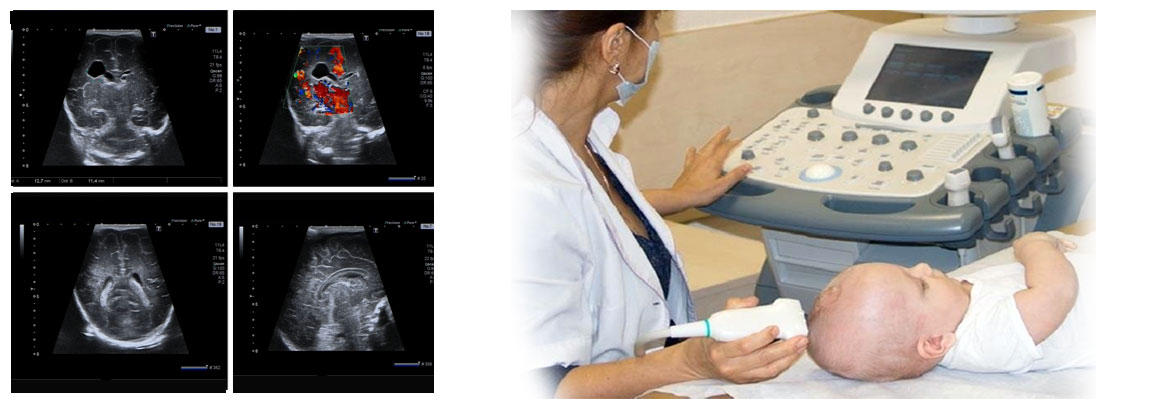It is an ultrasound technique by which high quality images of brain are obtained using an Ultrasonography machine with a specialized ultrasound probe / transducer. An ultrasound probe / transducer is placed on the head at specific locations, and returning signals are used to depict interior structures of brain.
It is an excellent modality for imaging brain in the infants and newborns. Neurosonography is also finding increasing use in other accessible regions of the central nervous system, including the adult brain during craniotomy and the spine during laminectomy.

